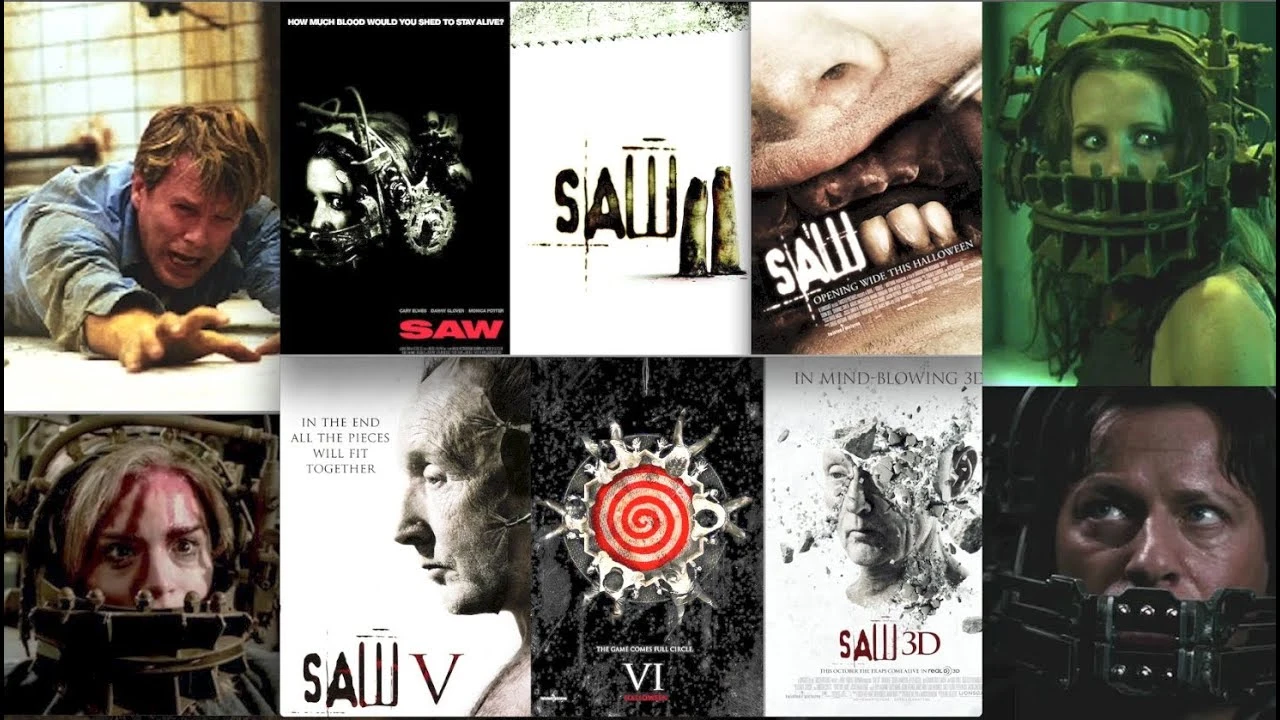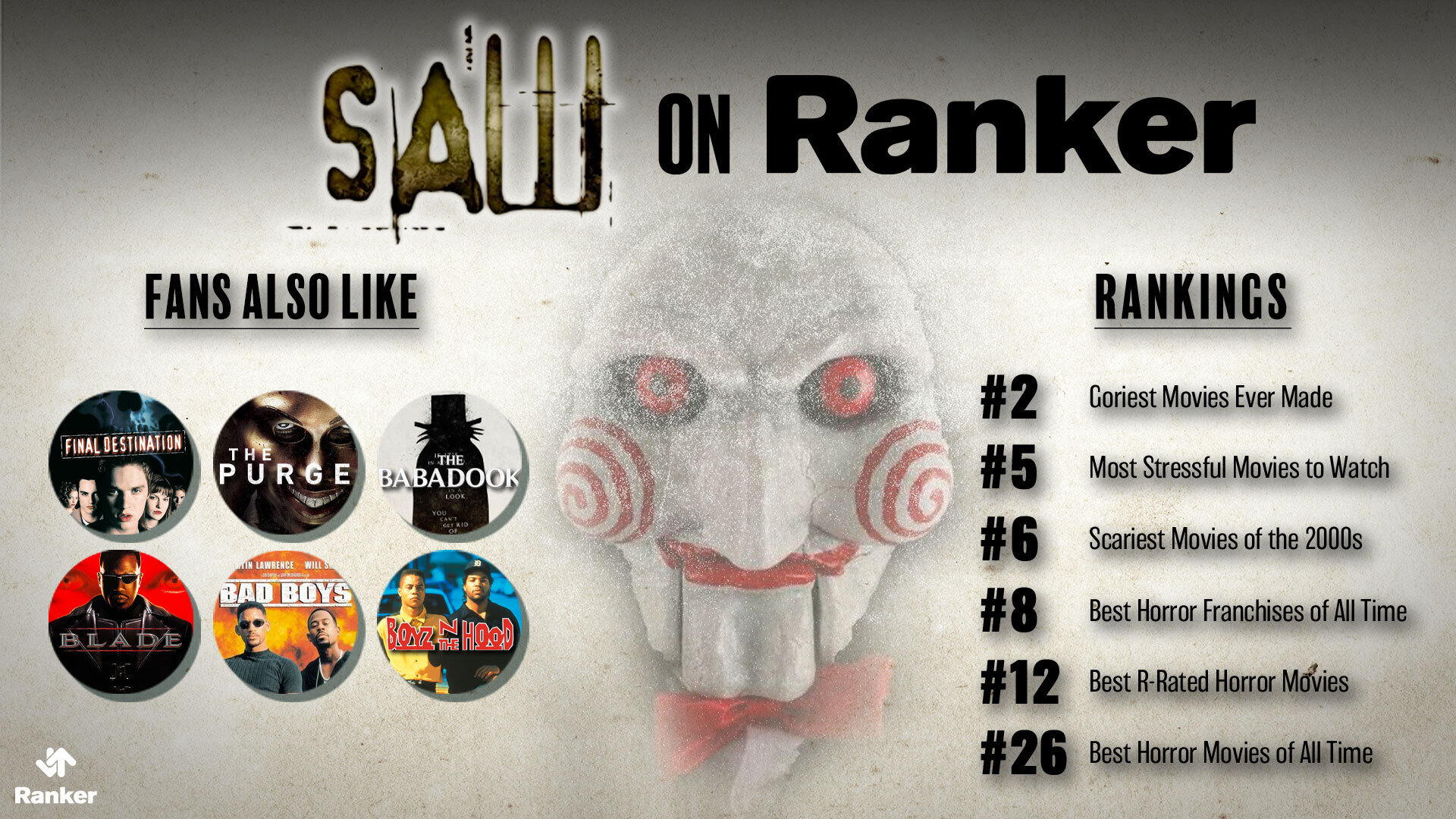Watch Saw Movies In Order: Full Timeline
Can a horror franchise truly be considered art? The Saw franchise, with its intricate web of interconnected narratives and morally ambiguous characters, makes a compelling case. Its exploration of life, death, and the human condition, albeit through a gruesome lens, has captivated audiences for over two decades.
From its humble beginnings as a short film to its current status as a sprawling multimedia empire, Saw has become a horror phenomenon. The series distinguishes itself not just through its inventive and often stomach-churning traps, but also through its complex narrative structure. Flashback within flashback, twist upon twist, the Saw films demand careful attention, rewarding viewers who piece together the puzzle alongside the victimsand Jigsaw himself.
[Insert WordPress Table Here]| Name: | James Wan |
| Born: | February 27, 1977, Kuching, Sarawak, Malaysia |
| Occupation: | Film director, screenwriter, producer |
| Known for: | Co-creating the Saw franchise, directing The Conjuring, Insidious, Aquaman |
| Collaborations: | Leigh Whannell |
| Style: | Horror, supernatural thriller, action |
IMDb profile for James Wan
The franchise's mastermind, John Kramer, aka Jigsaw, isn't your typical slasher villain. Motivated by a twisted sense of justice, he doesn't simply kill; he "tests" his victims, forcing them to confront their perceived flaws and appreciate the value of life. This moral ambiguity, coupled with Tobin Bells chilling portrayal, elevates Jigsaw beyond a mere monster and into the realm of a compelling, albeit deeply disturbed, anti-hero.
While some criticize the series for its graphic violence, dismissing it as "torture porn," Saw offers more than mere shock value. The elaborate traps, often Rube Goldberg-esque in their complexity, function as metaphors for the self-destructive behaviors of the victims. Each contraption, however gruesome, is designed with a specific purpose, reflecting Jigsaw's twisted philosophy. The films explore themes of redemption, self-preservation, and the consequences of our choices, challenging audiences to confront their own moral compasses.
The success of the initial Saw film, directed by James Wan and written by Wan and Leigh Whannell, spawned a franchise that continues to evolve. Sequels, prequels, and spin-offs have expanded the Saw universe, delving deeper into Jigsaw's backstory, introducing new apprentices, and further exploring the ramifications of his deadly games. Though the quality of the films has varied, the core concept remains potent, continually finding new ways to shock and engage audiences. The latest installment, Saw X, proves that the franchise is far from finished, continuing to draw viewers into its intricate and macabre world.
Beyond the films, the Saw universe has expanded into video games, comic books, and even a stage play, solidifying its place in popular culture. The franchise has become a touchstone for modern horror, influencing countless other films and solidifying the "torture porn" subgenre. Whether you're a seasoned horror aficionado or a curious newcomer, the Saw franchise offers a unique and undeniably disturbing cinematic experience.
Navigating the Saw timeline can be a challenge, given its non-chronological storytelling. The films jump between different time periods, revealing crucial backstory and connecting seemingly disparate events. Understanding the order of events is key to fully appreciating the narrative's intricacies and the evolution of Jigsaw's deadly game.
The enduring popularity of the Saw franchise is a testament to its ability to tap into our primal fears. It forces us to confront uncomfortable truths about ourselves and the choices we make. While the gore and violence may be a deterrent for some, those who can stomach the brutality will find a complex and thought-provoking exploration of the human condition, hidden beneath layers of blood and twisted metal.
So, are you ready to play a game?


